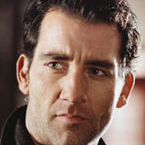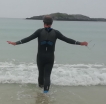RFalvo69
Posts: 1380
Joined: 7/11/2013
From: Lamezia Terme (Italy)
Status: offline

|
This is my first AAR ever on this site. I'm reading "An Army at Dawn" by Rick Atkinson, and the book spurned me to finally learn GG: WitE and fire up the "Torch to Tunisia" scenario. I selected "Normal" difficulty but I gave 110 points to the Axis across all the variables. I'm playing as the Allies (100 at everything). Full FOW obviously, but "Movement FOW" is turned off, as suggested by the manual.
This will be a learning experience so expect a lot of SNAFUS. They will not be corrected with a reload (unless really serious) but considered part of the "historical realism" in my game and weaved into the narrative. Atkinson's account of the campaign, up to the point I got (halfway through), is a tale of misery, bickering and learning through painful mistakes. I fully expect the same as I go along.
Also, English is not my first language, so expect also some creaky grammar.  Anyway: Anyway:
TURN 0 - Prologue
Before November, 10th 1942
(This entry will be long. I don't plan to be so detailed in subsequent turns).
After defeating Vichy France forces in North Africa, the Allies set their eyes on the next prize: Tunis. The great struggle between the Axis and the Free World is about to begin. Delusional slogans like "Christmas in Tunis!" and "Free Europe by 1943!" are liberally exchanged, amid a lot of toasts, between the "forever friends". Saner minds look doubtfully at the hopeful term "United Nations".
The general euphoria creaks a bit when the Luftwaffe and the Regia Aeronautica steal the kickoff by acting first. The Axis does a lot of recon missions but also shows that their ability to dominate the seas is intact. When pointed out how the Allies lost only 12 airframes versus 34 lost by the Axis, the angry retort is "Because no one went up!"
Entombed in his frigid headquarters at Gibraltar, the Supreme Commander Allied Expeditionary Force of the North African Theatre of Operations (whose eerie acronym is "NATOUSA") General Dwight D. Eisenhower ("Ike") looks at a theatre of operations that covers the whole of North Africa - from Casablanca in the West to Alexandria in the East. The weather is inclement. The Med is under a blanket of rain. On the "Western Sector" (Algeria and Tunisia), there are heavy rains the interior too. Terrain is becoming muddy and roads are disappearing, along with the idea of an "Allied blitzkrieg".
Right now the British and the French are the only fighting forces worth of mention. On the ground the US OOB comprises the headquarters of the II Corps at Oran; attached to it there are a lot of support units, but basically no one to whom send them. A battalion from the 26th Infantry Task Force guards the forward (empty) US airbase at Tébessa (curiously spelt "Tbessa" on the Allied maps - maybe no one can find the "é" key on the typewriter); the lonely 50th Parachute battalion is on sentry further South, at Gafsa airfield, after capturing it with a daring drop. That's it. The French boast a concentration of "prêt-à-porter" troops at Constantine under the XIX Free French Corps. The rest, mostly along the coast, is British. Some UK units are tank formations but the British 1st Army (under whom almost everyone is allocated) is, for now, mainly composed of brigades and battalions. "Every Brigade is a Corps and every Division an Army" quip the admin people tasked to keep the Allied OOB in order. Morale, however, is generally high. The American military is animated by "can do" zeal and a desire to win expeditiously - even if their Army is in Morocco facing the neutral Spanish. "Just everybody here itches to teach Rommel how a war is fought" a Yank writes to his mother.
On the East the morale is even higher. The vaunted Afrika Korps is, supposedly, in disarray and on the run. The heroes of El Alamein, the British 8th Army and their leader, Field Marshal Bernard Law Montgomery, 1st Viscount Montgomery of Alamein ("Monty") are poised to chase. A number of Commonwealth units, British, Australians and South Africans, is earmarked for withdrawal, but the Allies still possess a tank-heavy force supported by the elite motorised brigades of the 2nd New Zealand Mixed Division. The aim is to catch Rommel and "teach him a second lesson" before he can reach Tunisia. Everybody is a teacher in North Africa. Absolutely no one, in turn, is worried by intelligence reports and ULTRA intercepts speaking of Axis troops reorganising in the Benghazi area, openly aided by intense supply airdrops.
Ike decides that before starting the campaign some administrative duty is in order. First, he drops the ill-boding "NATOUSA" alphabet soup and joins the simpler "AFHQ" ("Allied Forces Headquarter"). He then launches "Operation: Better to Prevent than to Cure" aimed at sending the inept II Corps commander, Major General Lloyd Fredendall, on the Algers beach with a pail and shovel. Yes, but substituting him with who? Patton? Bradley? Clark? After some agonising hours Ike decides to go with Bradley and, maybe, switch to Patton later. He needs a good administrative commander in what is shaping to be, for now, a war of infantry for the US. That Bradley costs a single Admin point vs. Patton's four is another important factor, especially after bleeding seven bloated points to sink Fredendall.
Regarding the air war, Ike decides to set the general directives but leave their implementation to the various Air HQs. It is obvious that the Axis will send reinforcements from Italy, via Sicily. The Strategic Forces are ordered to hammer ports and straits, while the Tactical Aviation will support friendly units, hit enemy ones and, hopefully, interdict a bit. The Allies decide that flying pure Air Superiority or Airfield Strike missions with the paltry number of Allied aircrafts in the theatre will only result in them being chewed up by the Axis air forces. Not everybody is happy about this. The Tbessa airfield is assigned to the 12th US Air Force (under James Doolittle), and the 47th USAAF LB Group is is taken from the National Reserve and redeployed there. Finally, a mandatory check reveals that the Eastern Sector is in need of some recon aircrafts. The No. 60 SAAF Recon Squadron is taken from the National Reserve and sent to Fuka - the most forward available airfield - under the Desert Air Force. It is composed by short range "Mosquitoes". Ground crews are ordered to reactivate these airfields on the double. The planes land on forgotten airstrips where only the sound of desert crickets can be heard; the pilots hope for the best.
Ike, suffering from a bad cold and perfectly sure that he forgot something important, sighs, and orders the start of "Operation HOLIDAYS" (the proposed "CHRISTMAS" being ditched after some cringe amid African Jews). The Allied Air War and the "Reconquista" of Europe are about to start...
_____________________________
"Yes darling, I served in the Navy for eight years. I was a cook..."
"Oh dad... so you were a God-damned cook?"
(My 10 years old daughter after watching "The Hunt for Red October")
|
 Printable Version
Printable Version

 Anyway:
Anyway: 










 New Messages
New Messages No New Messages
No New Messages Hot Topic w/ New Messages
Hot Topic w/ New Messages Hot Topic w/o New Messages
Hot Topic w/o New Messages Locked w/ New Messages
Locked w/ New Messages Locked w/o New Messages
Locked w/o New Messages Post New Thread
Post New Thread